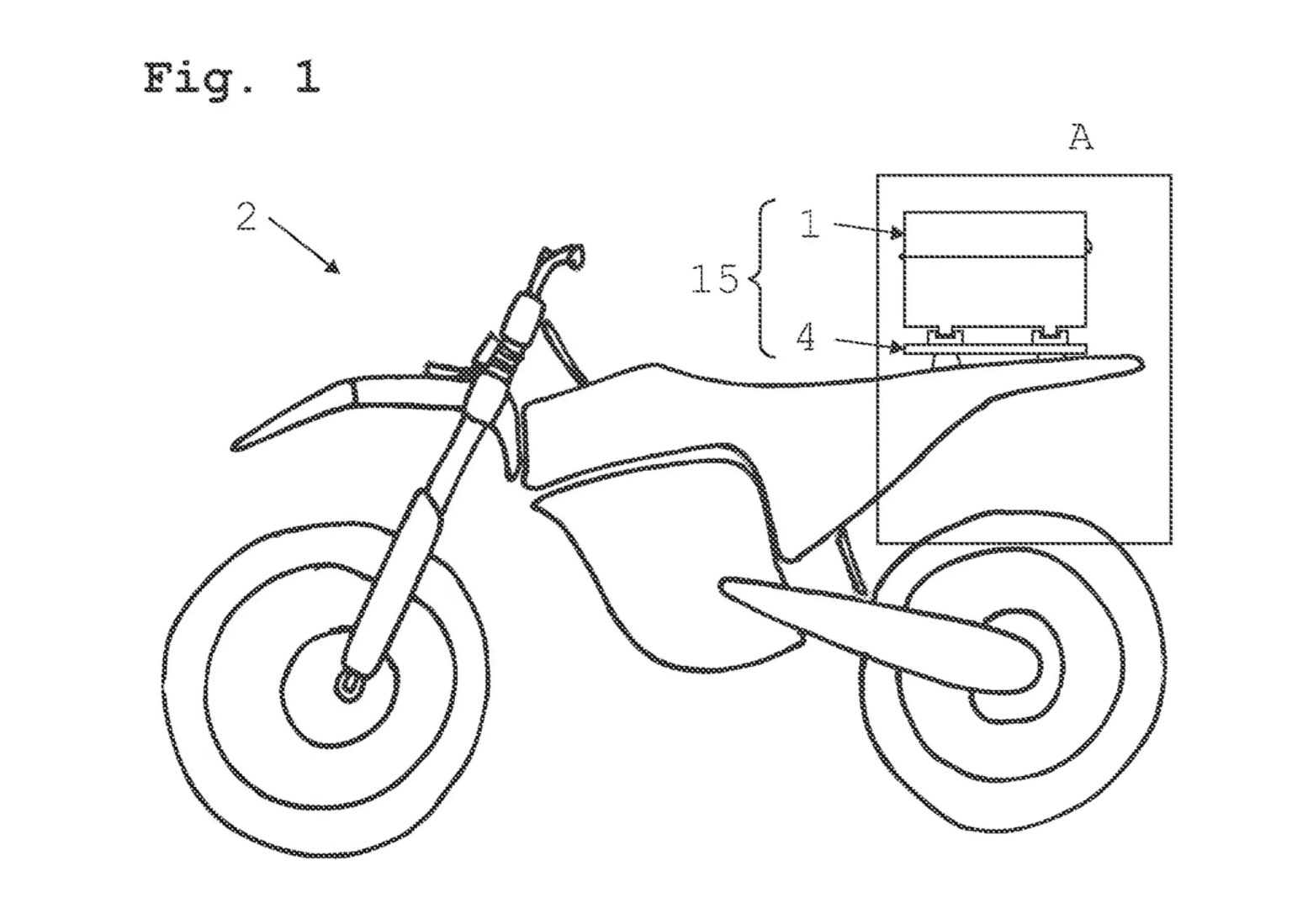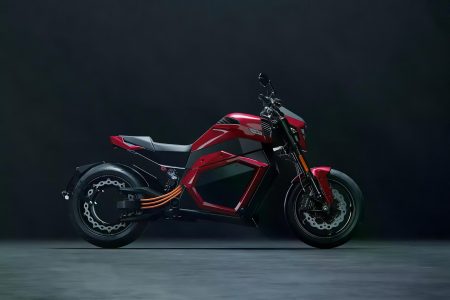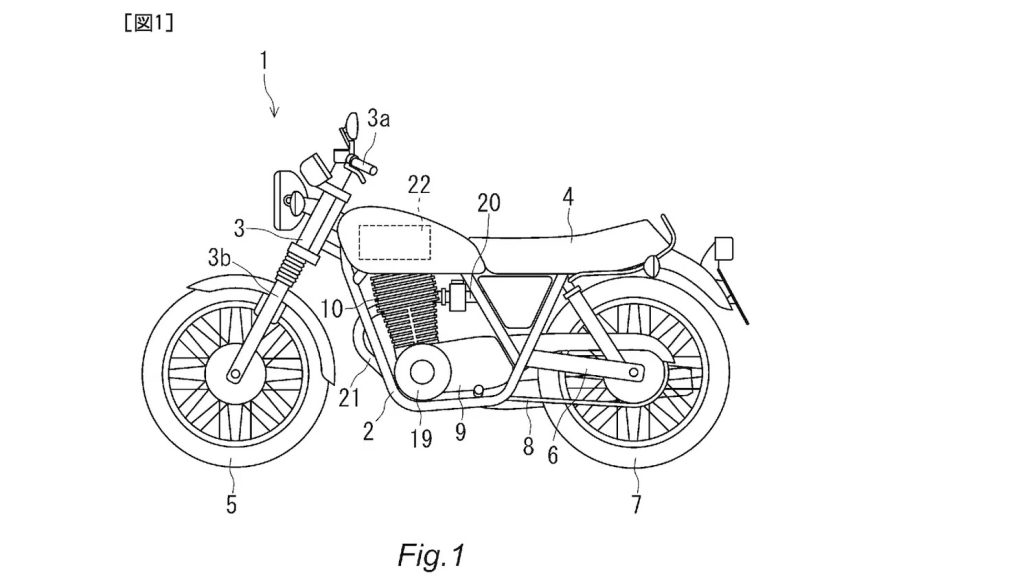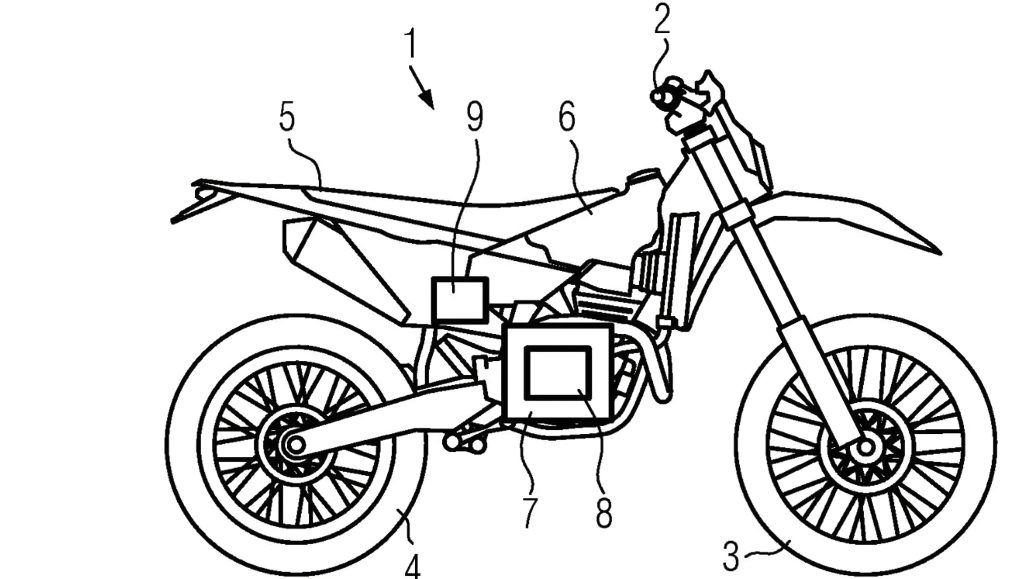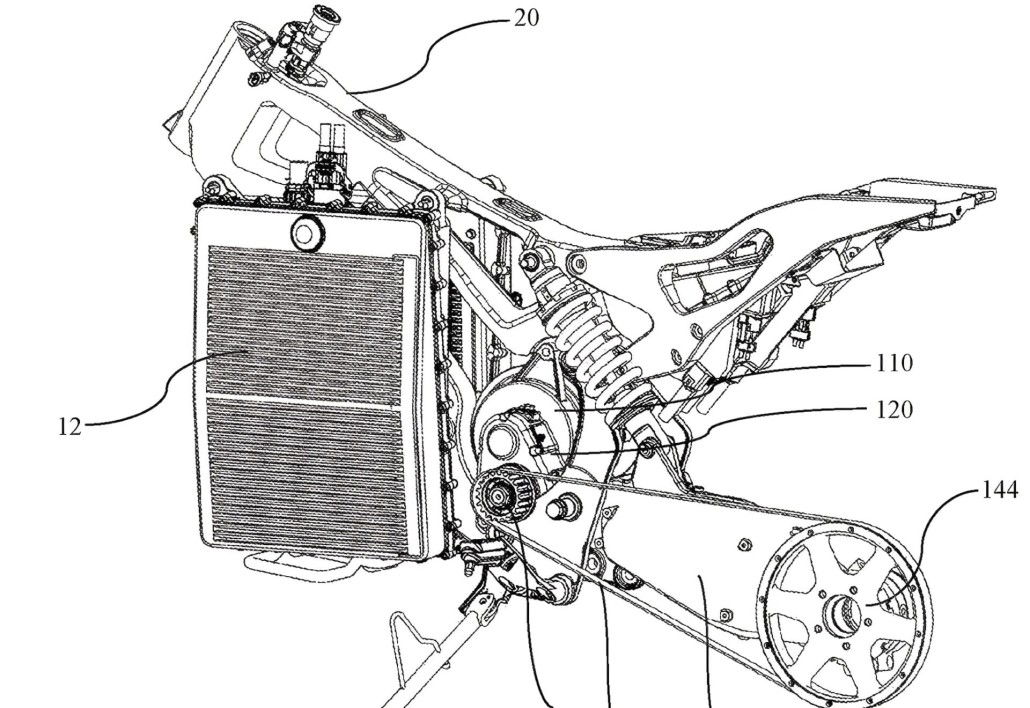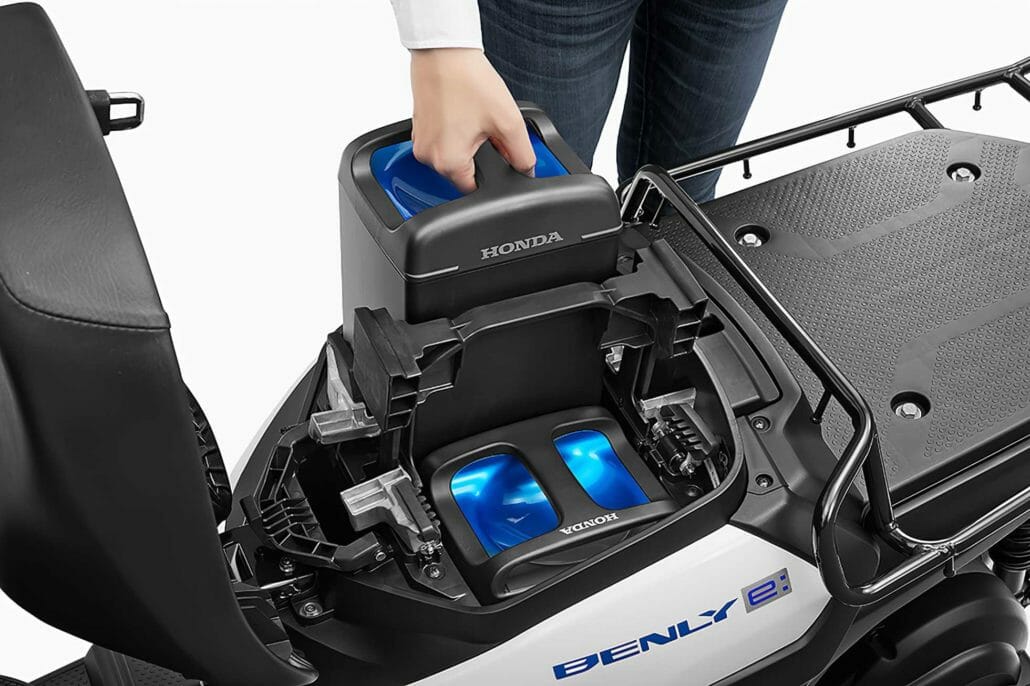Although the patent drawings show a model similar to the KTM Freeride E-XC, it is unlikely that this exact model will serve as the platform. Rather, it appears to be a schematic example of future electric models.
Three concepts, one goal: greater range for e-bikes
The basic idea behind the system is simple: a lightweight, compact electric motorcycle with limited range for everyday urban use should be able to be quickly converted into a long-distance vehicle when needed. To this end, the patent describes three technically different variants of a range extender that look the same on the outside and connect directly to the motorcycle’s high-voltage system.
Mini combustion engine as a power source
The first version relies on a classic range extender in the familiar sense: a small combustion unit with an integrated generator. This solution combines a compact gasoline engine, a generator, and a fuel tank in one box. The DC voltage generated can be used to charge the main battery either while driving or when stationary. This solution is reminiscent of familiar concepts from the automotive sector, but has rarely been implemented in motorcycles to date.
Hydrogen fuel cell as an alternative solution
As a second option, KTM describes a version with a fuel cell. The patent specification does not go into detail, but it is likely to be a hydrogen fuel cell, as has already been used in some prototypes of two-wheelers. In this case, hydrogen from a pressure tank is combined with oxygen from the ambient air to generate electrical energy and water. However, due to current infrastructure problems and the high cost of fuel cells, this technology is still considered unsuitable for everyday use.
Additional batteries in top case format
The third and simplest variant uses additional battery cells to extend the range. KTM is planning two versions: one is an empty container with slots for two standardized, interchangeable battery units. This is in line with KTM’s participation in the Swappable Batteries Motorcycle Consortium, which aims to establish cross-manufacturer battery systems. The second version integrates the additional batteries permanently into the top case, including a dedicated charging socket for charging at home.
Flexibility as the key to everyday usability
The core of the concept is modular expandability. This keeps the motorcycle light and easy to handle in everyday use, but allows it to be quickly equipped with more range for longer tours. Studies show that most motorcycle trips are relatively short and within the range of current electric models. At the same time, however, occasional long-distance trips are also relevant for many users, which highlights the practical benefits of such range extender concepts.
It remains to be seen whether and when this technology will be ready for series production. As always, the decisive factors will be the concrete implementation and the additional costs incurred. One thing is certain, however: with this flexible solution, KTM could significantly increase the everyday usability of electric motorcycles and tap into new buyer groups.






- Milestone MotoGP 25 (Day One Edition) – Sony PlayStation 5 – Rennspiel – PEGI 3 (EU import)



